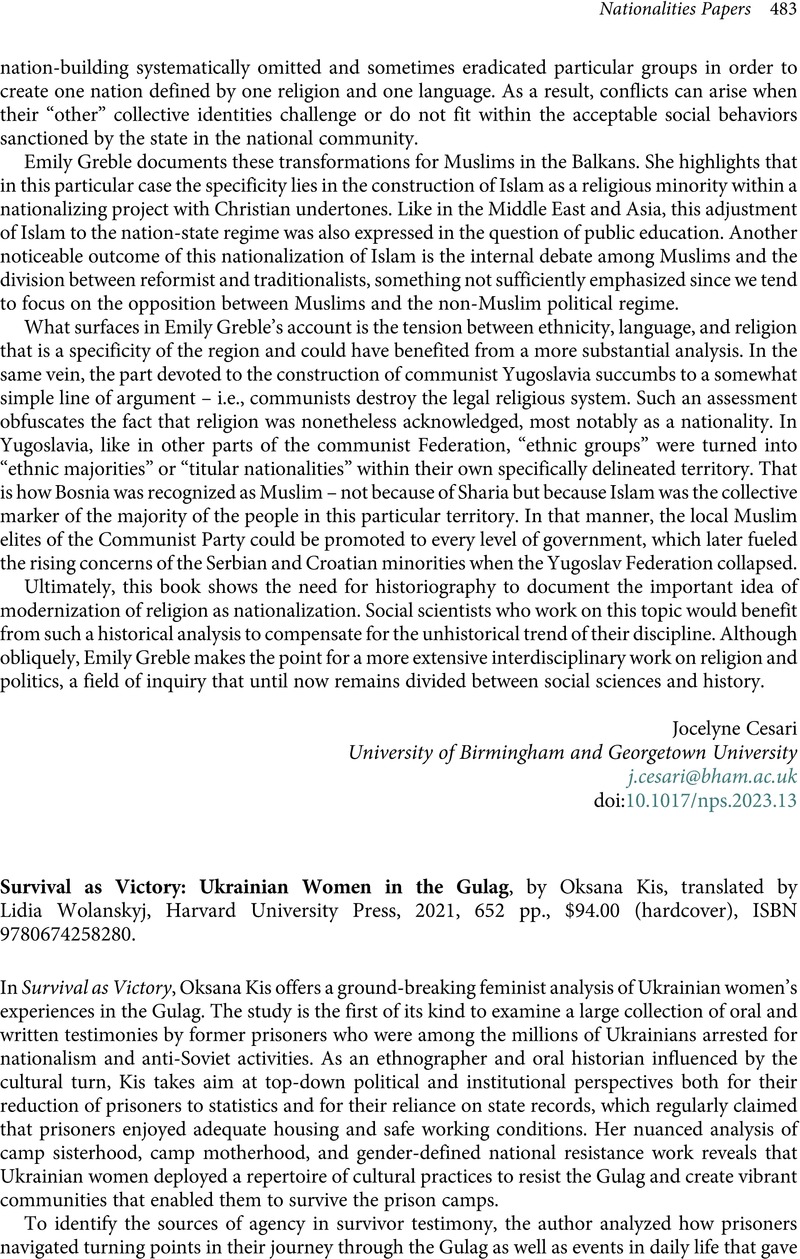No CrossRef data available.
Article contents
Survival as Victory: Ukrainian Women in the Gulag, by Oksana Kis, translated by Lidia Wolanskyj, Harvard University Press, 2021, 652 pp., $94.00 (hardcover), ISBN 9780674258280.
Review products
Survival as Victory: Ukrainian Women in the Gulag, by Oksana Kis, translated by Lidia Wolanskyj, Harvard University Press, 2021, 652 pp., $94.00 (hardcover), ISBN 9780674258280.
Published online by Cambridge University Press: 31 March 2023
Abstract
An abstract is not available for this content so a preview has been provided. Please use the Get access link above for information on how to access this content.

- Type
- Book Review
- Information
- Copyright
- © The Author(s), 2023. Published by Cambridge University Press on behalf of the Association for the Study of Nationalities



